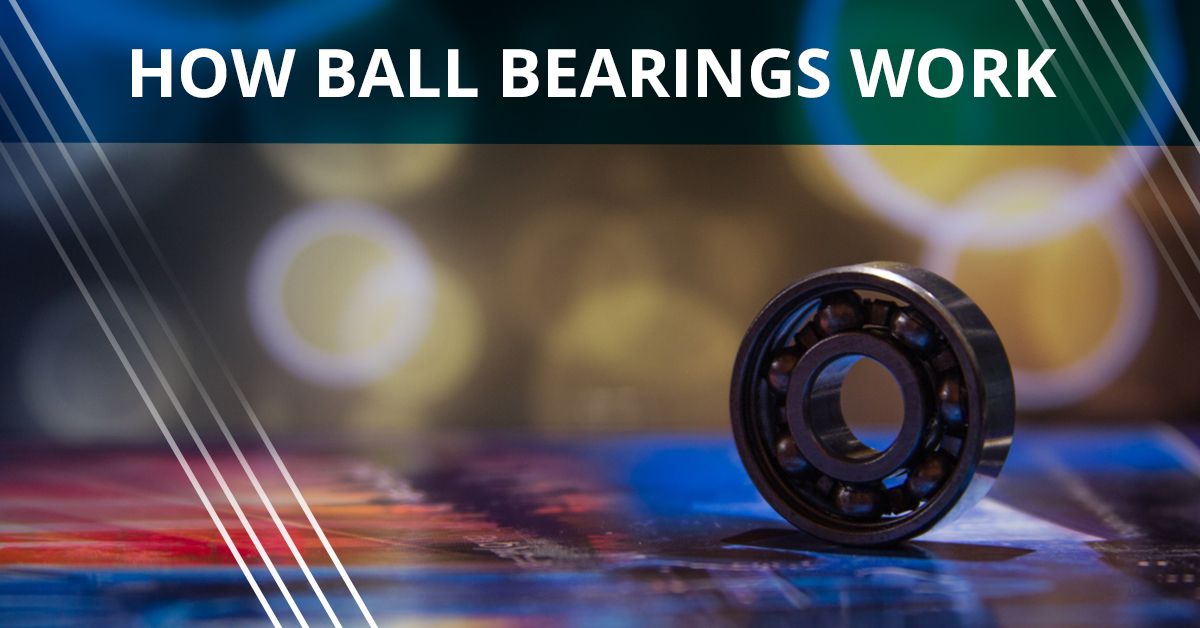Ball bearings are integral to many devices and machines we use on a daily basis. But how exactly do they work? That’s what we’ll be exploring today as we dive into why ball bearings are important, the physics behind them, and even some common uses that you might not be aware of. And when you’re in the market for high-quality bearings, HCH Bearing Americas is the company for you.
HCH BEARING
DEEP GROOVE BALL BEARING MANUFACTURER

How Ball Bearings Work
-Wait, Physics?
Yes, physics. The science of matter and energy. Without it, the world would be motionless. So how does it affect bearings? It comes down to the two types of load it will be carrying; radial and thrust. Radial loads act at right angles to the bearing’s rotational axis, while thrust (AKA axial) loads act parallel to the axis. An easy way to remember this is, if the load acts along the axis, it’s axial or thrust. If the load acts in line with the radius, it is likewise radial.
Let’s get to the heart of the matter. Something moves better when it can roll rather than when it slides. That’s why it’s easier to skateboard down a paved neighborhood hill than it is to snowboard down it. Sliding creates friction between the object in motion and the surface it is on, resulting in a force that slows or outright halts the movement. Friction is greatly reduced when the object is able to roll, as it provides a smaller surface area for the friction to hold onto, similarly reducing the force created in reaction to the movement.
Radial loads can be found in a motorized pulley system, where the bulk of the load results in the tension in the belt which is connecting the pulleys to the motor. A thrust load is like that found in a rotating bar stool. Here, the entirety of the load comes from the weight of the person sitting on the stool. But a combination of both loads is not unheard of. It can be found in the hub of a car’s wheel, where the radial load is from the weight of the car, and the thrust is from the forces created by going around a turn.
-So. Bearings.
Bearings are able to reduce friction by providing smooth metal balls or rollers, along with a smooth, metal inner and outer surface, known as the inner and outer race, for the balls to roll against. This bears the load, which allows for smooth spinning. Many different bearings exist to handle specific loads, be it radial, thrust, or a combination of the two.
-Ball Bearings
The most common type of bearing, as they are able to handle radial and thrust loads efficiently. They’re mostly found in situations where the weight of the load is relatively light and small. Ball bearings can be found in everything from the inside of a skateboard wheel to the inner workings of a hard drive.
The way ball bearings specifically work is actually quite fascinating. The load is taken on and transmitted from the outer race to the ball, and then from the ball to the inner race. Because we’re dealing with a sphere, the connections it is making to the inner and outer race are minimal, which allows for smooth spinning and less space for friction to manifest. However, this also means that the contact area holding the load is very small. That means if it is overloaded, the balls can either deform or squish, rendering the bearing worthless.
Ball bearings can seem like a heady topic, with a large focus on the physics involved in making them work. But when you take a look at many objects you use in your daily life, you’ll notice how important ball bearings are to making them work. If you have more questions about bearings and how they can improve your life, give HCH Bearing Americas a call today!
